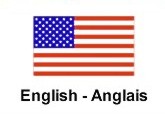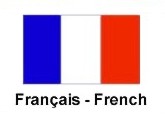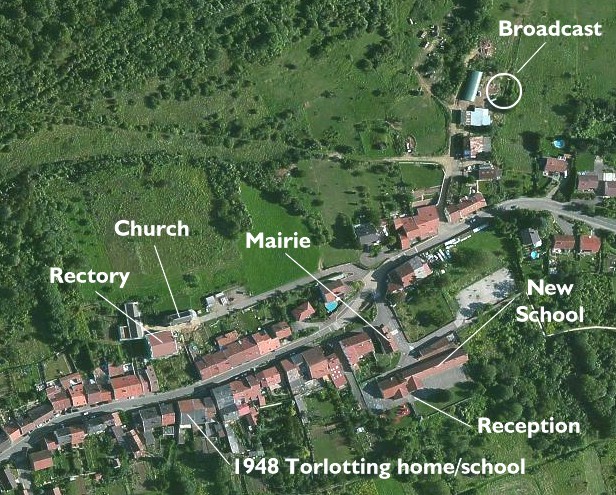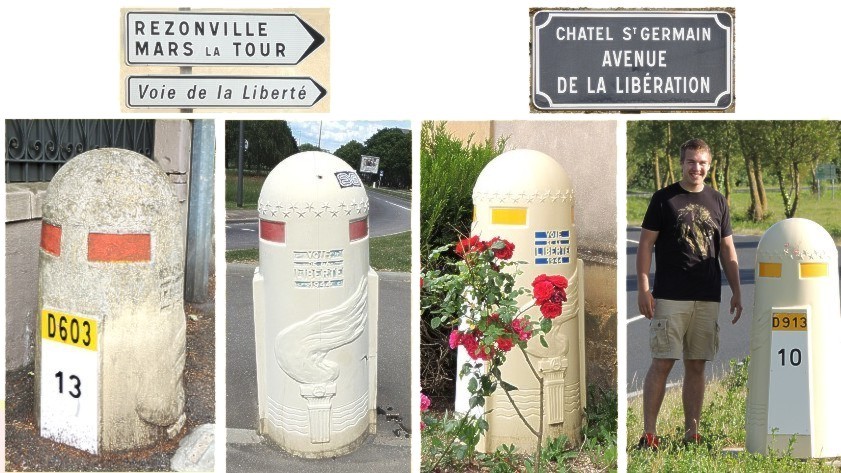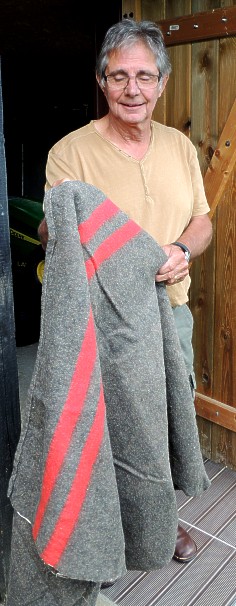The Torlottings and the Prachts met with their American visitors a number of other times during the days which followed
the reception. Time was spent sightseeing, grabbing a bite to eat or just chatting. After the schools closed in the United
States for summer vacation, the Torlotting grandchildren Paul and Emma arrived and they too helped close the "communication gap."
As the end of June approached, the visitors scattered. Katherine and Hannah set off on their month-long trek through Italy,
Germany and the Netherlands. Mariya flew to Boston to visit friends. Ryan flew to Wisconsin to enjoy what
remained of his last summer vacation before entering the university in the fall. Art and Gloria returned to their home
in Kansas. Even the Torlotting family left Fèves, off on a vacation of their own with their grandchildren.
Everyone left with happy hearts, having had a wonderful time. The only thing that would have made it better was if someone from
Morganville had been present.
But the late-June conversations and others that followed via e-mail added details to the Morganville - Fèves story. Some
of these include:
1. FÈVES BROADCAST -
Torlotting identified the location of the late-afternoon June 23, 1949 radio broadcast from Fèves to
Morganville. It was performed in what amounted to little more than a shed, now gone.
All of the labels on this satellite image are of places the Americans visited on May 31, 2014, except one. The circle in the far upper-right corner indicates where the broadcast took place in 1949.
2. TORLOTTING GRAVES - On June 1, Torlotting and Pracht picked up Vaughan and Freeland in Metz
and drove to the cimetière du Sablon in the southeast section of the city. There, they visited the Torlotting family gravesite
where Henri and Mathilde were buried. Torlotting said Mathilde had modernized the gravestone some years earlier and, in the
process, some family details had been lost.
Torlotting burial site in Metz' Cimetière du Sablon
3. LIBERTY ROAD - Early in their stay in Metz, Freeland and Vaughan encountered a "borne" at the intersection of two roads on the
west side of the city. It, and others like it, were the result of the creation of the Voie de la Liberté - "Liberty Road."
Announced June 5, 1946 by Metz Mayor Gabriel Hocquard, each borne, or marker, was placed at the edge of the road, one kilometer
from the previous one, along the path the American Third Army had traveled in liberating France. Each was constructed of concrete, stood nearly 50 inches high and
weighed more than 650 pounds. While they varied, all had the same general appearance with certain common elements. These included
a torch inspired by the one carried by the Statue of Liberty, a capital letter "A" for the shoulder patch marking of each soldier
in the Third Army, waves to represent the ocean upon which the liberators traveled, 48 stars representing each of the American
states at the time, and the kilometer distance from Borne 0 in Normandy.
Borne 0 is in front of the city hall in Ste. Mère-Église, the first town liberated after the D-Day landings of
June 1944. Later, it was decided that a marker would be placed on Utah Beach, where Gen. Theodore Roosevelt III - the
only general in the landing parties - stepped ashore. His landing craft was pushed off course by the heavy seas.
Unfazed, he was quoted as saying, "We'll start the war from right here!" To avoid re-numbering all the other markers,
it was given the number "00."
Top: two signs along Liberty Road; bottom-left: an original borne; bottom-middle-left: the first borne that caught Vaughan's eye
in Metz; bottom-middle-right: borne in the village of Gravelotte; bottom-right: Ryan with borne number 10 near Utah Beach
In an August 2014 column, Freeland wrote about their chance discovery of the bornes. Quoting
from that column:
When we first arrived in France, Art asked our friends Gérard and Francis if they knew where any of the bornes were
located. Neither could recall where any were placed, so Art thought it might be difficult to find one.
But just a few days after our chance encounter in Metz, we saw several more during our return journey from a day trip
to Verdun. Art checked his GPS so we could go back another day to take photos. He was startled to see the road we had
taken was marked "Voie de la Liberte" - Liberty Road. By accident, we had stumbled onto the road. We returned the
following day and had no difficulty locating one marker after another because they were placed every kilometer.
Changes to the road over the decades, such as widening and the installation of traffic circles, meant that some of the
bornes became hazards. So in 1982, damaged and displaced bornes were replaced with plastic replicas.
4. THE BLANKET - While visiting at the Torlotting home on June 14, Vaughan wondered aloud
if there was anything tangible sent by the people of Morganville that might still exist. Much of what had been sent
was foodstuffs and would have been consumed. Items such as winter clothing most likely would have been worn until
it was threadbare and disposed of.
Torlotting paused, smiled slightly, and then said that he had a blanket that had been given to his aunt and uncle.
Excited to see a real artifact from the gifts that had been sent, Vaughan asked to see it. Torlotting remarked that
son Hervé had told him to not bring it out because Gérard now used it to cover his lawnmower. Vaughan laughed, but
insisted!
Later, a December 1952 letter would be found in Kansas State University's special collections. It was from
Morganville committee treasurer Dan Roenigk to CARE, requesting a "blanket package containing 1 100% virgin wool blanket"
be sent to Mrs. Henri Torlotting.
5. SÉGOLÈNE DE WENDEL - On June 17, two days before the Americans were to leave
Lorraine, they spent the late afternoon at the Torlotting home. Gérard brought out some old documents and photos and Paul
and Emma were pressed into translating.
At some point, reflecting on their Christmas-time visit to Morganville, Gérard mentioned that except for de Wendel, no one
from there had seen Morganville before their visit. The words "from there" struck Vaughan as he had thought of Ségolène
as just another French official.
After World War II, Ségolène and her mother had worked hard to help the people of the area. These efforts prompted Ségolène's
trip to the United States in May 1949 when she stopped in Morganville with Todd and his wife.
So on their last day in France, Freeland and Vaughan drove to the cemetery in Hayange to visit the de Wendel family's burial
place.
Cemetery section devoted to the de Wendel family
They discovered that an entire section of the cemetery was devoted to the family. It is configured as a series of steps with the burials under large stone slabs on the left and right of the central steps.
Ségolène de Wendel's name on her burial slab
